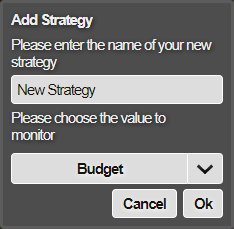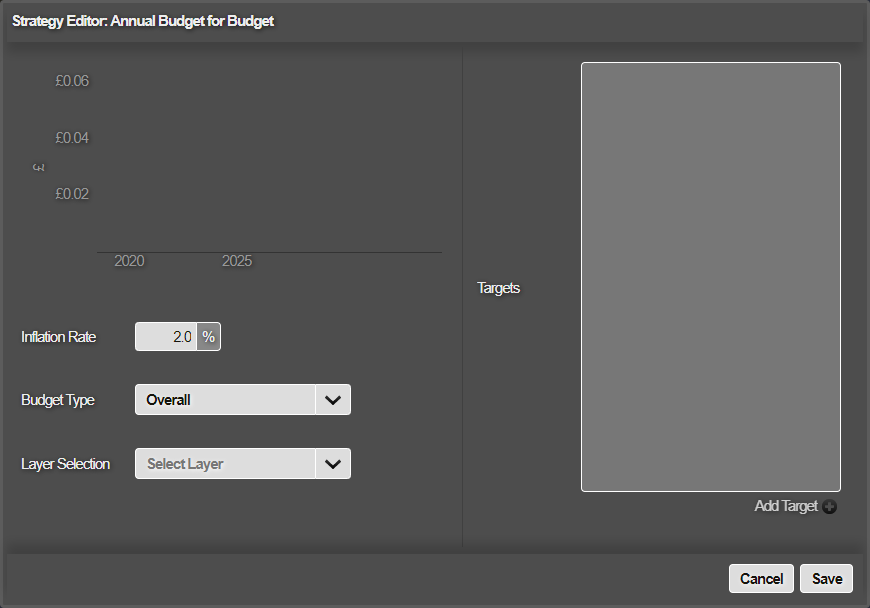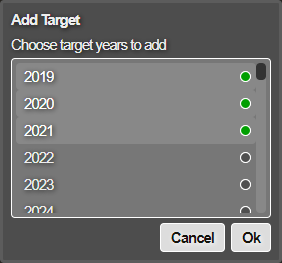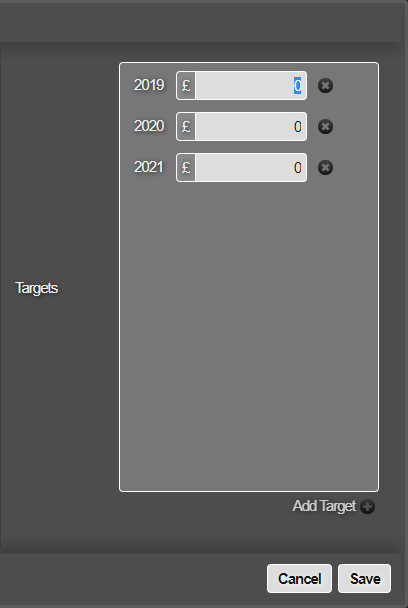Budgets and Budget Strategy
Budgets are defined in Horizons using Strategies. A budget strategy consists of a list of annual budget values by year. The following table shows an example budget strategy.
| Year | Budget |
|---|---|
| Financial Year 2013-2014 | £25,710,000 |
| Financial Year 2015-2016 | £31,800,000 |
| Financial Year 2017-2018 | £35,430,000 |
If a budget strategy contains gaps where a value is not entered for a specific year, the value is assumed to be equal to the last budget value. If future budget amounts are unknown, an inflation rate can be used to estimate probable values. The assumed budget strategy for the example above are shown below with an inflation rate of 2%.
| Year | Budget | Reason |
|---|---|---|
| Financial Year 2013-2014 | £25,710,000 | Entered |
| Financial Year 2014-2015 | £25,710,000 | Assumed |
| Financial Year 2015-2016 | £31,800,000 | Entered |
| Financial Year 2016-2017 | £31,800,000 | Assumed |
| Financial Year 2017-2018 | £35,430,000 | Entered |
| Financial Year 2018-2019 | £36,138,600 | Inflationary Rise 2% |
| Financial Year 2019-2020 | £36,861,372 | Inflationary Rise 2% |
Using Sub-budgets
The budget strategy can consist of a lump sum that is allocated against a network. You can also create budget strategy by allocating sub-budgets to individual parts (represented by layers) within a network. The sub-budgets are later aggregated to provide the whole budget figure. The same rules are applied to sub-budgets as described above.
Creating a basic budget strategy
This section describes how to create a budget strategy by applying a whole budget figure.
- In the Analysis module, click the Strategies Icon. The Strategies drop-down opens, showing all previously configured strategies grouped by strategy type.
![]()
- Click Add Strategy at the bottom of the drop-down.
- Enter a name for the budget strategy and click OK.

- Ensure that the strategy monitor type is set to Budget (default) from the pick list and click OK.
The Strategy Editor dialog is displayed.

Ensure that the following fields are configured:
Inflation Rate
This allows you to set the overall inflation rate that you are using to estimate probable values.
Budget Type
Ensure that this displays the Overall selection, which is the default.
- To add a budget value for a specific year, click Add Target . The Add Target dialog is displayed, this allows you to select one of more years.

- Select the target years you want to add and click OK.
The selected year or years appear in the Targets list. You need to enter a budget for each year that you initially selected. Change the highlighted default value of 0 to the required value.

-
You can add more budget targets as required. When you add more target years after the initial ones the budgets in the newly selected years are calculated (by default) by the system based on the previous year plus inflation based on rate you entered previously. You can manually enter values if required.
-
When you have completed all you targets, click Save. The new budget is listed in the Budget folder of the Strategies drop-down.